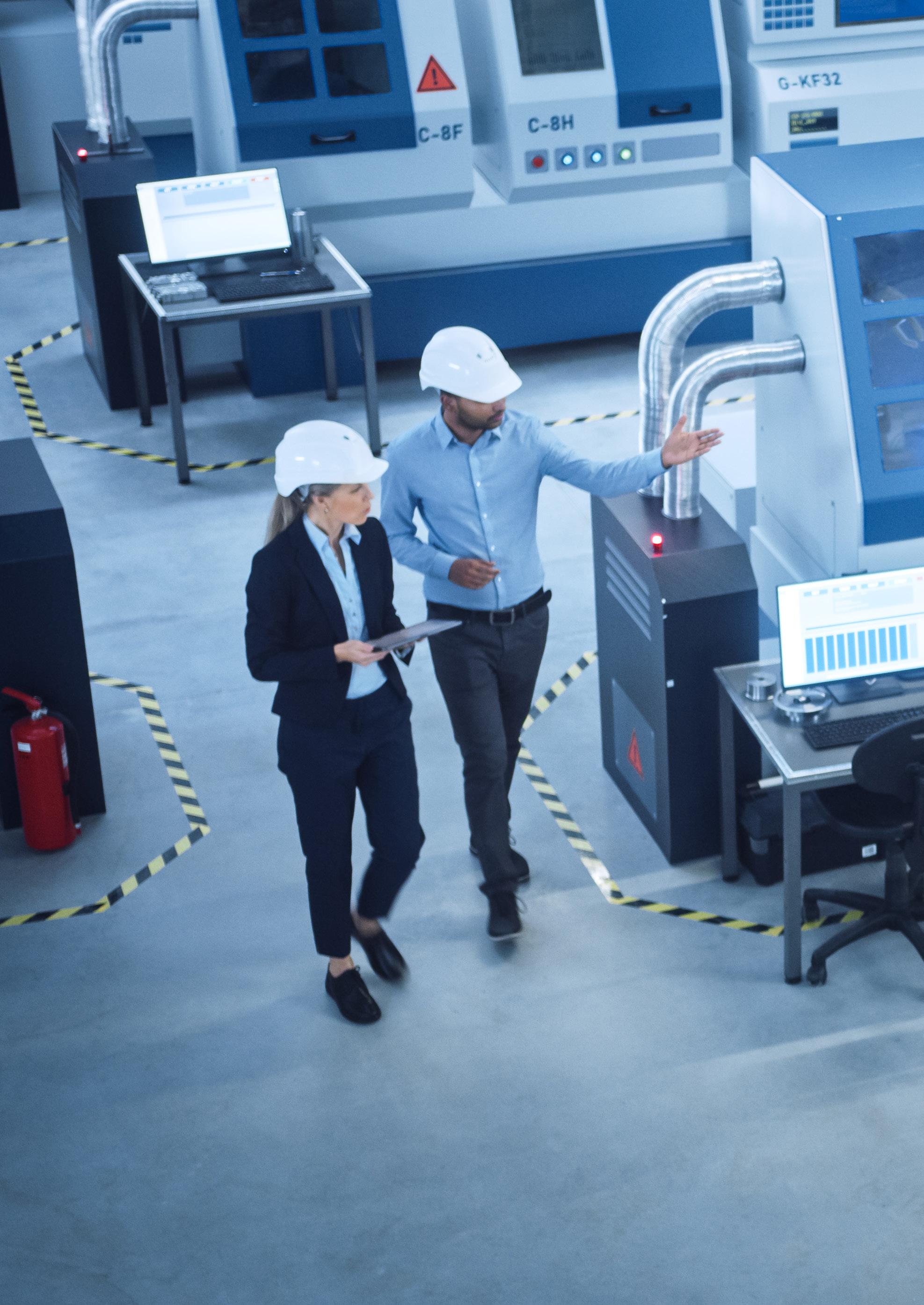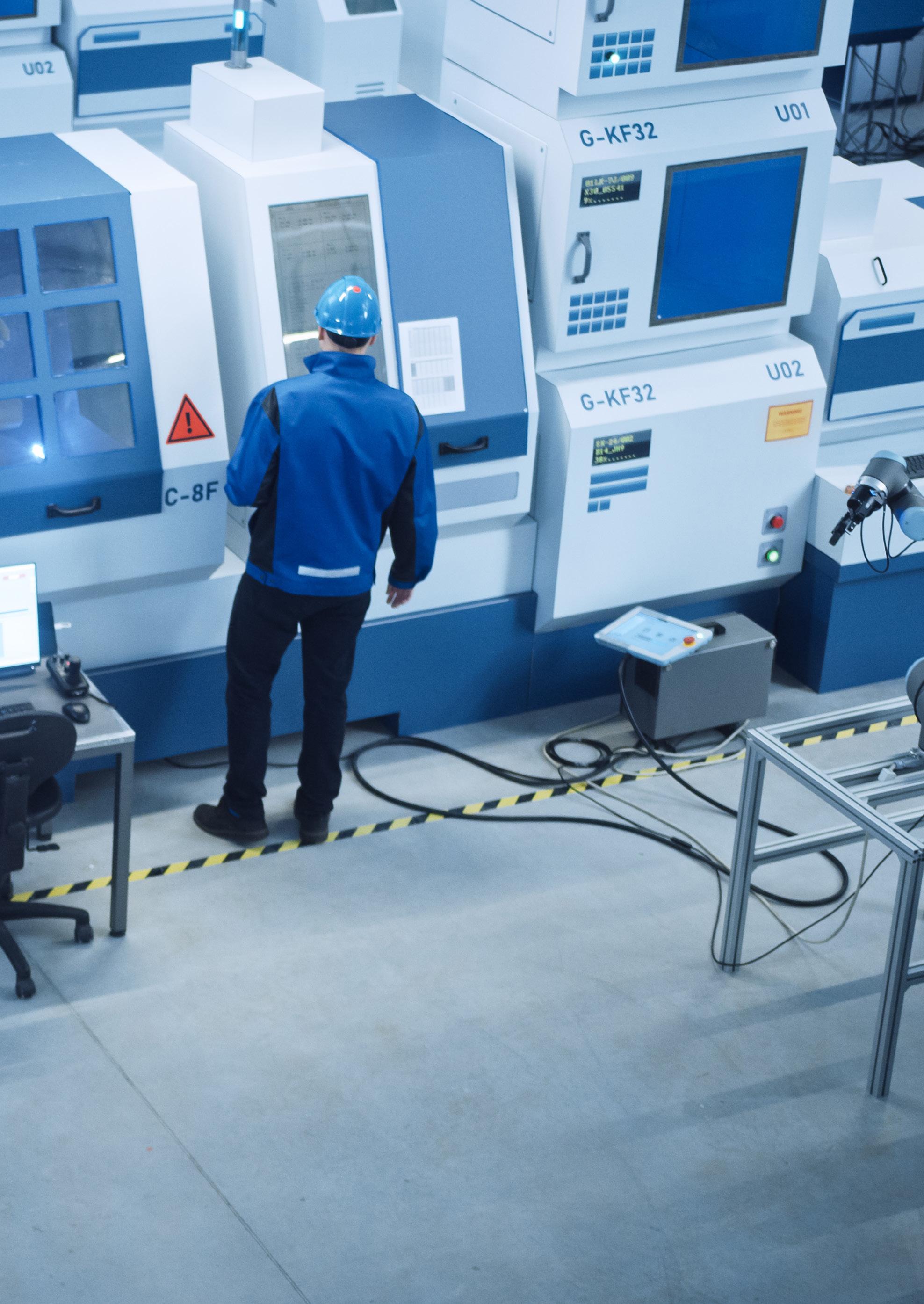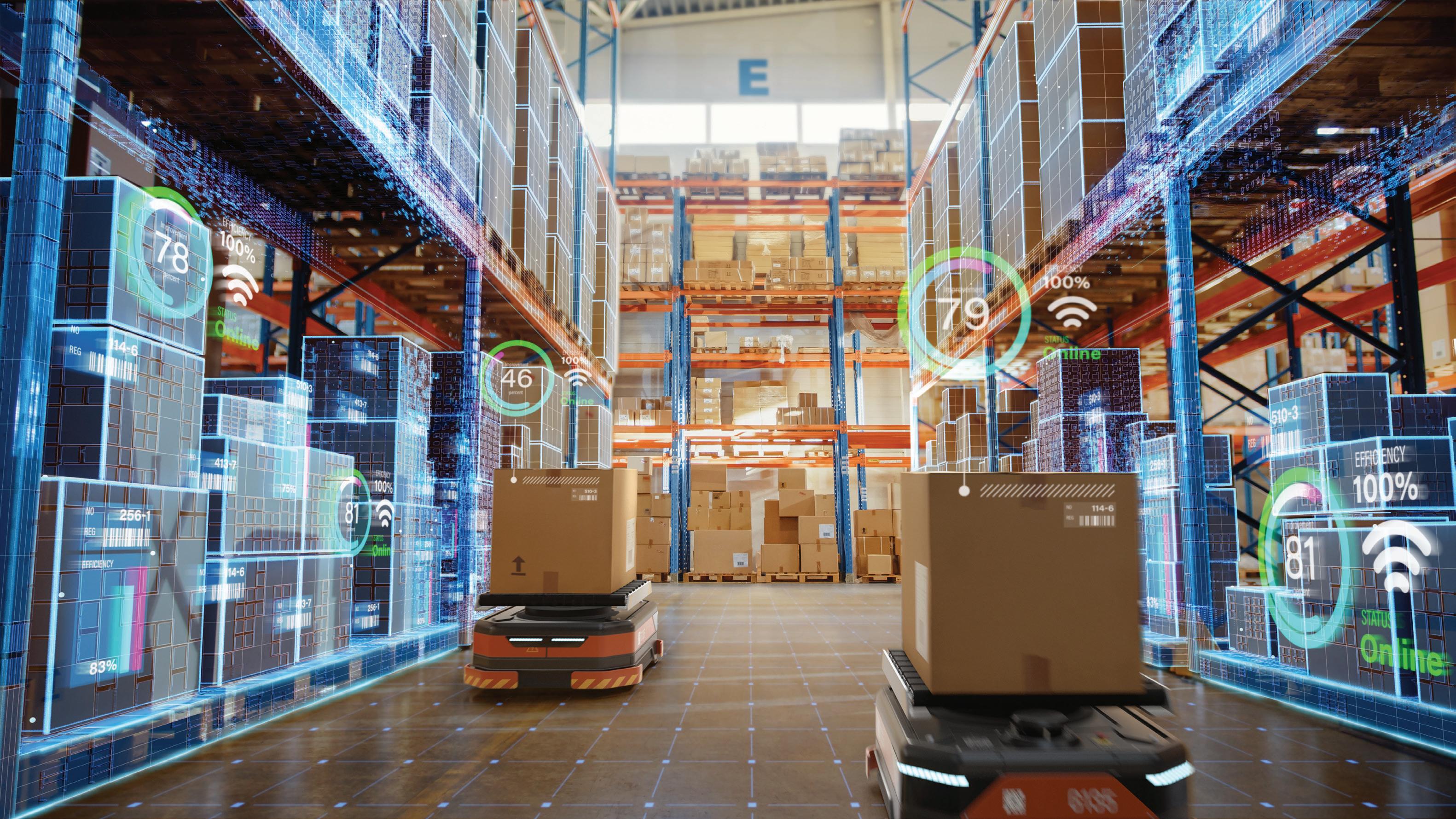REDEFINED AND DESIGNED TO DELIVER:




REDEFINED AND DESIGNED TO DELIVER:




The credentials of SAP speak for themselves:
€31 billion in total revenue (2023); The number one software company in the Dow Jones
Sustainability Index for 16 years; And over 280 million subscribers to its cloud user base.
However, one of the most impressive milestones for the software firm is its transition from an “on-premise based solution company to a Cloud company”, highlighted Mike Wade, EMEA Leader - Digital Supply Chain Customer Advisory at SAP.
But why is the enterprise application software company, which was established in 1972, garnering such success from its customers?
Underpinning its pivot into a fully cloud based business, SAP has a clear understanding of the
impact digital technologies have and will have in redefining traditional supply chain management.
Its key focus now is to support and enable its customers in moving beyond what Mike described as the “foundational layer of a digital supply chain”, into a realm where a business can empower its people through autonomous supply chains.
“By definition, autonomous supply chains enable self-governing decision making while reducing manual intervention. This truly empowers the people who run the supply chain,” explained Mike. “So, over time, digitalisation is enabling the people who run supply chains to do their job even better and with more data insights,” he said.


PROJECT DIRECTED BY:
JESS COLLINS
ARTICLE WRITTEN BY:
LAURA WATLING

Mike believes that one of the key reasons customers choose SAP to digitally transform their supply chain, is because its offering has the broadest process coverage across the supply chain.
SAP’s Design to Operate (D2O) portfolio is based on five core pillars: Design; Manufacture; Deliver; Operate; Plan; all enabling a best of suite capability.
“Design for us is where the supply chain begins,” said Mike, “This is the world of new product introduction and development - the ideation of a new product through to launching it into the market. We enable our customers to manage the development and launch of new products, shortening the time to market, which offers a real competitive advantage for most organisations today,”.
In the Manufacture pillar, the solutions across multiple forms of manufacturing types, gives customers crucial visibility for both process manufacturing and discrete manufacturing.
“D2O enables efficient and effective manufacturing operations so that manufacturing companies and organisations can deliver the expected plan,” continued Mike.
Deliver, the world of Logistics, Mike highlighted, has become more visible across the world, after the challenges faced during the Covid pandemic and the socio-political landscape of the last five years.
“People who don’t work in supply chains learned a lot about the word logistics over that period,” he added.
SAP’s D2O solution enables companies in both simple and complex warehouse, and fulfilment and distribution operations to embrace the “network of networks” for global logistics freight operations and visibility.
“This is really the area where I’ve seen many, many customers who digitally innovated through the foundation layer moving up to the autonomous layer in
recent years,” Mike explained.
SAP’s Operate solutions for asset operations and maintenance enables customers to get a better return on the investments made in physical assets.
“Take oil and gas or utility companies, for example. They often invest billions in their equipment and facilities. If they can improve the return on that investment, it’s a huge advantage for them,” he added. This also involves managing maintenance operations —both inside customer’s facilities and for assets that are spread out across different locations.
“Our solution enables field maintenance as part of this asset operations and maintenance process,” Mike continued.
SAP’s D2O Plan solutions also supports its customers in supply chain planning across all time dimensions, in what Mike described as the “central nervous system of any supply chain”.
The software helps SAP’s customers to forecast accuracy, inventory optimisation, and reductions, and reduce working capital, ultimately building risk resilience.
SAP’s best of suite approach enables a fully integrated capability across all the five D2O pillars, into SAP’s core Enterprise Resource Planning (ERP) systems.
“Our customers know how important the native integration with our SAP core ERP software is. This data integrity across the Supply Chain is crucial, and only SAP can deliver this across that portfolio,” added Mike.
The D2O solutions have supported worldwide clients such as Equate Petroleum, Coca Cola Europacific Partners, and Twinings to drive business outcomes via digital transformation.
“In addition, our customers know that we consider it crucial to invest significantly into our solution roadmap and development. We are continually evolving our solution offerings with new functionality and new capability,” Mike said.




Can you describe your current role at SAP and the key responsibilities you manage?
As solution advisor for the DESIGN pillar of SAP Digital Supply Chain solutions, I support customers and partners and help them understand the benefits of SAP Product Lifecycle Management and its associated best practices
How do you ensure that the digital solutions you implement align with the overall strategic goals of the companies you work with?
Having a competitive and flexible portfolio of products is a key factor of resilience for our customers. Thanks to SAP digital chain solutions, our customers can take quick steps to react to market or supply chain disruption and adapt the development of their offering accordingly. Also the integration to other processes ensure that the changes are made available at the right time for production start.
How do you see the role of digital transformation in the supply chain evolving in the next few years?
Digital transformation is key for realizing the digital thread mentioned before. Connecting people processes and data is the base step to aim for. When it has been realized, scenarios like automation or AI can then become effective.

Can you describe your current role at SAP and the key responsibilities you manage?
I am responsible for the go to market and business development function for the logistics portfolio across EMEA
What are some of the biggest challenges you face in your role when it comes to implementing digital solutions for the supply chain?
One of the biggest challenges when looking to drive transformational change across a supply chain is viewing the operation holistically. When businesses seek to optimize operations and performance in a single business function such as planning or logistics it runs the risk of building bigger silo’s which have the effect of reducing performance across the wider business. Businesses need to look at the endto-end operations and consider the supply chain as a single entity rather

than one made up of a number of discrete functions. Whilst feature/ function are key considerations when undertaking tool selection a much more important factor is creating interoperability across business functions within the supply chain to enable end-toend optimization and improved performance.
Businesses also need to engage end users of solutions in the selection and design processsupply chain is an area where tacit knowledge still plays a significant role in managing the operation, the ability to capture this during the design phase - and then systemize this knowledge in terms of the business process ensures a far higher degree of adoption and therefore improved business outcomes.
How does SAP support companies in their journey towards a fully digitized supply chain?
SAP supports this journey by creating a single digital thread of product information across the lifecycle from design through manufacturing, planning, logistics and asset maintenance and service with integration to the financial and business information within the ERP system. Furthermore, the ability
to extend collaboration and control beyond the 4 walls of the enterprise with business networks allows the organization to make better decisions, across a broader stakeholder group, with improved information more quickly to improve business outcomes.
How does SAP approach sustainability within supply chain digitization, and what role do you play in that?
The extended supply chain is the area where organizations can make the largest sustainability impact. This starts with product design to ensure that sustainability in terms of the materials used, and their sourcing is done in a way which minimizes environmental impact - and here the ability to collaborate with partners and extended design teams is critical.
The design process also need to take account for how the product can be manufactured in a way which minimizes waste and manufacturing planning, scheduling and execution are optimized to limit the consumption of energy.
Planning plays a critical role in ensuring that demand forecasts are as accurate as possible to avoid overstocking which can
lead to write off’s and product obsolescence. The supply plan needs to ensure it can meet the forecasted demand without resorting to unnecessary modal shifts which have a higher carbon footprint. Accurate inventory planning and optimization helps organizations right-size their inventory position, limiting the proliferation of warehouse building which can impact on the green belt.
Logistics obviously has a huge impact on carbon emissions and should be managed in way which favors lower carbon modalities such as rail as far as possible. Vehicle fill rates and route planning should be optimized to mitigate the number of trucks on the road and empty running reduced as far as possible be utilizing collaborative networks to identify backhaul opportunities. Visibility into supply chain disruption is critical in identifying problems quickly and avoiding unnecessary expedited shipments.
Finally undertaking effective service and maintenance processes for operational assets ensures that they are more energy efficient and have an extended operating lifespan reducing the need for replacement.


Can you describe your current role at SAP and the key responsibilities you manage?
As the Business Development Director at SAP for Digital Supply Chain solutions, with a focus on Sustainability and Artificial Intelligence, my role centers around helping organisations leverage cutting-edge technologies to build smarter, more sustainable supply chains.
I work closely with businesses across industries to understand their evolving needs, particularly around efficiency, resilience, and sustainability. By incorporating AI into supply chain processes, companies can unlock significant opportunities for automation, predictive insights, and optimisation, allowing them to make more data-driven, agile decisions. In parallel, I focus on embedding sustainability throughout the supply chain, from responsible sourcing and production to reducing carbon footprints and enhancing transparency for greener operations.
My key responsibility is to demonstrate how the combination of AI and sustainable practices can enable companies to not only drive operational efficiencies but also meet
their environmental goals and regulatory requirements. This involves advising C-level executives on digital transformation strategies, building strong partner ecosystems, and showcasing the real-world impact of intelligent, sustainable supply chain solutions. The aim is to help companies navigate the complexities of today’s market while preparing for future challenges, ensuring long-term success through technology and sustainability integration.
What key technologies do you believe are driving the digitization of supply chains today?
Key technologies driving the digitalisation of supply chains today include Artificial Intelligence (AI) and machine learning for predictive analytics and automation, and the Internet of Things (IoT), which enables real-time visibility of assets. Cloud computing facilitates global collaboration and data sharing, while blockchain enhances traceability and trust through secure, transparent records. Advanced analytics and big data provide actionable insights, optimising supply chain performance, while digital twins allow for virtual simulations to improve efficiency and adaptability. Additionally, automation and robotics streamline processes, and sustainabilityfocused technologies help companies track and reduce their environmental impact. Together, these technologies enable smarter, more agile, and sustainable supply chains.
In addition to these key technologies, having an integrated supply chain is critical for creating
risk-resilient and sustainable operations. Integration ensures that data flows seamlessly across all supply chain functions—from procurement to logistics— enabling real-time visibility and collaboration between stakeholders. This end-to-end connectivity allows businesses to anticipate and respond to disruptions more effectively, minimising risks such as supply shortages or unexpected delays.
By integrating sustainability metrics into the supply chain, companies can better track and reduce their environmental footprint, ensuring compliance with regulations and meeting consumer demand for responsible business practices. Ultimately, a well-integrated supply chain, powered by digital technologies, enhances agility, transparency, and sustainability, positioning businesses to thrive in an increasingly complex and uncertain global environment.
How does SAP approach sustainability within supply chain digitization, and what role do you play in that?
SAP approaches sustainability within supply chain digitization by integrating sustainability into its core business processes. SAP solutions help businesses track and manage environmental, social, and governance (ESG) metrics throughout their supply chains, providing tools for datadriven decision-making.
SAP’s analytics capabilities enable businesses to identify sustainability risks and opportunities, making informed decisions to reduce their environmental impact. Additionally, SAP supports circular economy initiatives by helping businesses implement models

like product reuse, recycling, and remanufacturing.
SAP collaborates with industry experts and non-profit organizations to develop innovative solutions and promote sustainable practices. Furthermore, SAP provides training and resources to help businesses and their employees understand the importance of sustainability and how to implement sustainable practices.
SAP’s role in promoting sustainability within supply chain digitization includes developing innovative solutions that help businesses reduce their environmental footprint and improve their social and governance practices. SAP offers a suite of integrated solutions that address the entire supply chain, enabling businesses to manage sustainability across their operations.
SAP also works with industry organizations to develop and promote sustainability standards and certifications. Additionally, SAP’s analytics capabilities help businesses track and analyze key sustainability metrics, empowering them to make informed decisions and drive positive change.
SAP fosters a culture of sustainability by encouraging its employees and partners to adopt sustainable practices and contribute to a more sustainable future. By integrating sustainability into its solutions and fostering a culture of sustainability, SAP plays a crucial role in helping businesses achieve their sustainability goals and contribute to a more sustainable world.

BUSINESS DEVELOPMENT MANAGEMENTASSETS & SERVICE MANAGEMENT
Can you describe your current role at SAP and the key responsibilities you manage?
I drive business development activities in the EMEA region, positioning the SAP Asset Management Solutions strategy and assisting customers in embracing digital transformation initiatives. Collaborating closely with marketing to create campaigns that raise market awareness of SAP Asset Management Strategy & Solution Portfolio. Deliver internal and external enablement sessions, support the creation of a partner ecosystem, and function as a trusted advisor during sales cycles.
How has your role evolved since you started at SAP, particularly in the context of supply chain management?
The evolution of sales roles within the digital supply chain technological area, especially in enterprise solutions like SAP, reflects broader changes in how technology is driving and transforming supply chain processes. SAP and similar platforms are critical in providing end-to-end visibility, automation, and integration in supply chain management. As these systems have evolved, so too have the sales roles associated with them.
What emerging trends in supply chain management are you most excited about?
Artificial Intelligence (AI) and Machine Learning (ML)
Predictive analytics: AI and ML are revolutionizing demand forecasting by providing real-time insights based on historical data, market trends, and external factors like weather and geopolitical events. This helps companies optimize inventory, reduce waste, and anticipate disruptions.
Automation in decisionmaking: AI-driven algorithms are automating decisionmaking in areas like procurement, logistics, and inventory management. This leads to faster and more accurate responses to supply chain challenges, reducing the need for manual intervention

BUSINESS DEVELOPMENT MANAGERMANUFACTURING AND I4.0 AT SAP
Can you describe your current role at SAP and the key responsibilities you manage?
Supporting our Industrial Customers to initiate their digital transformation of manufacturing operations and Industry 4.0 initiatives to deliver operational excellence. Mainly focusing on Domain Advisory, selecting the best solution fit to address business requirements for the next 10 - 15years. Helping Partners to prioritize their investments and co-innovation strategy with SAP and our Customers and bring them up to speed with latest SAP Innovation. Last but not least, working on new business opportunities to leverage SAP Innovations and best of suite.
How has your role evolved since you started at SAP, particularly in the context of supply chain management?
I’ve been involved in SAP projects and enterprise transformations since 2010. Starting as Supply Chain Consultant in various industries, I’ve joined SAP in 2020 to bring manufacturing Pre Sales skills in the French Market Unit. Manufacturing is at the heart of the
supplychain,nogoodsproduced,no deliverytotheendcustomers.Inthe currentglobalisationoursocietyis dealingwith,Manufacturingresilience andAgilitytriggeredahighinterest andI’vethenjoinedourRegionalEMEA Team(Europe,Africa,MiddleEast)to supportthegrowthoftheregionand ourlocalMarketUnits.
What are some of the biggest challenges you face in your role when it comes to implementing digital solutions for the supply chain?
Veryoften,digitizationbecomes anITTopicand/orpre-requisitein thedifferentorganizations.What’s importanttoconsider,ifwedon’tget theBusinessbuy-in,whateverthe solutionis,thereisahighprobability tofailandnotgetusersAdaption.We aredeliveringsolutionsandbestin classapplicationstosupportbusiness transformationandnotITconsideration. ITisevolvingatveryhighspeed,ifyou considerManufacturingOperations asasystemitself,thissystemdoesn’t really“like”changes.Howdowebring innovationsathighspeedanddo notdisruptthesystem?Longterm companystrategyiskeytodelivering thepromise,I’musedtosayingthink big,startsmallandthechallengeis alwaystocapitalizeonquickwinsto evaluatethefastROIandmitigate therisks,combinedwithalongterm visiontoachievethegoals.Obviously, ITdepartmentscan’tsolveitby themselves.
How does SAP stay ahead of the curve when it comes to innovation in supply chain digitization?
TalkingaboutManufacturing Operationsinthecloud,SAPisa pioneerifnotthefirsttooffera ManufacturingPlatformtosupport severalindustriesbringingbest practices,fullyintegratedprocesses suchasplanning,maintenance andlogistics,withamicroservice approach.



At Delaware, a global consultancy with a presence in over 20 countries, we're transforming how businesses operate. We partner with industry leading technology providers, including SAP and Microsoft, to deliver cutting-edge solutions that empower businesses to achieve their missioncritical priorities.
We don't just implement tech; we become your innovation partner, helping you solve your most pressing challenges.
Prioritising a practical approach, we believe technology should complement common sense. We leverage data to guide you towards optimal next steps, ensuring technology serves as a tool, not a replacement, for sound decision-making.
We understand that the supply chain landscape is ever evolving. Hyper-personalisation is a key trend, with customers today expecting tailored
products and services which impact every step of the supply chain. What’s more, in the face of geopolitical uncertainties, disruptions can have a ripple effect, forcing companies to adapt and reroute entire supply chains. That’s why we help you develop the agility needed to meet these rising demands, with a solution designed for your specific business needs.
We also caution against neglecting internal vulnerabilities, particularly in asset-intensive industries like energy and manufacturing, where spares and maintenance inventory are crucial for keeping operations running smoothly. These internal supply chains are often overlooked when considering potential disruptions.
By combining cutting-edge technology with a practical understanding of your business needs, we empower you to navigate the complexities of today's supply chain landscape. With a focus on innovation and resilience, we're here to help you not just survive, but thrive in an ever-changing world.


Whilst SAP’s D2O solution’s popularity is a clear “no-brainer”, Mike also shared the importance of its partner ecosystem in its value proposition to clients.
“Our ecosystem of partners are hugely important for SAP in order for us to be successful and our customers to be successful,” he explained. “The ecosystem allows us to scale across industries and geographies. We have a different range of ecosystem partners, some focused on implementation and some who are reselling and implementing our technology which helps to give our customers valuable choice,”.
An SAP Platinum partner with entities in the UK, Belgium, Netherlands and France, Delaware helps SAP’s customers to understand how best to adopt and consume its digital supply chain solutions.
“Adoption and consumption of our solutions is absolutely crucial to our customer’s growth, our growth, and our technology’s growth,” shared Mike.
Additionally, Delaware is an innovator which has partnered with SAP in the codevelopment of its digital manufacturing solution for the mills industry, delivering SAP’s technology with a specific functionality for the sector.
“This is a great example of how our partner ecosystem can help with things like solution development, which has played an important role in our success”.
Considering the future of digital supply chain management, Mike foresees the outlook to be “predictably unpredictable”.
As one way of helping our customers overcome this unpredictability, SAP has partnered with Everstream to develop additional risk resilience.
Everstream enables SAP to incorporate crucial predictive risk insights into the
supply chain planning processes, in addition to traditional demand and supply signals such as customer activity, supply, and demand signals. This helps to drive insight and efficiency for customers, increasing the ability for businesses to mitigate risk to its supply chain and develop that risk resiliency required.
In Mike’s conversation with Business Enquirer he noted how younger generations moving into the realm of supply chain management is supporting the adoption of digitalised supply chains.
It is clear that those who choose not to adopt technology into their business’ supply chain will simply be left behind.
“When you consider the impact that technology can have in supply chain practitioners’ worlds, it will mean less manual intervention. It will drive the need for new skills and an understanding of how to set up supply chains, which may be different from the traditional way that they have been set up, governed, and operated. I’m seeing the technology actually driving the change in people, driving skills requirements, and driving how businesses model and set up those supply chains,” Mike explained.
Mike made it clear that people will always remain valuable in the world of supply chain, and whilst technology adoption is becoming crucial to the transformation of a business, he highlighted that “it doesn’t mean anything unless we have the right team to bring that to life for our customers”.
“I believe here at SAP in the Digital Supply Chain business, we have the best team in the industry. They’re passionate about helping our customers drive the maximum business benefit from SAP solutions. I have confidence and I know we have the best people in the industry in front of our customers,” he shared.
www.sap.com



Can you describe your current role at SAP and the key responsibilities you manage?
Supporting customers across Europe, Middle East and Africa (EMEA) to accelerate their end-to-end digital supply chain transformations. Advise clients on the impact of integrated planning processes, connecting demand chains to networked supply chains in real-time. Finding the best starting points to help them rapidly capitalise on their main opportunity and business value. Follow the purpose of helping the world run better with digital supply chains.
How does SAP support companies in their journey towards a fully digitized supply chain?
SAP’s value for our customers is a Suitefirst and AI-first networked supply chain. Scaling an agile and adaptive network to meet global dynamic demands can be faster with our end-to-end digital processes and data.
Our fully integrated supply chain suite means our customers have real-time visibility of risks and opportunities, with financialised decision-making support to contextualise and act on these drivers to deliver profitable order promising.
AI in our end-to-end supply chain and enterprise platform has delivered big
impacts for our customers in the last years. Many companies are ready to take advantage of Business AI. SAP’s integrated enterprise and network data means that companies can take advantage of their historical data as well as future plans and network constraints to guide the supply chain faster and more profitably with AI.
What do you think will be the next big disruptor in the supply chain industry?
AI technology is already here, and as explained this will increasingly transform supply chains throughout the design to operate processes, having already seen the impact AI in our supply chain planning platform SAP IBP has delivered in the last few years. I believe that quantum computing will also have a disruptive impact on supply chain optimisation, helping companies move to more adaptive and autonomous planning and operations due to the high accuracy and speed of hybrid algorithms across global networks. Sustainability will have a larger disruptive impact than people believe. It has already had an impact on packaging and plastics, and as regulation increases, there will likely be more disruptive changes in production and logistics process as climate impact is monitored more closely. Impacts could include electrification, automation, and robotics; for example self-driving fleets of electric trucks and drones.
Finally, I believe in people as being a pivotal and positive disruptive force for the supply chain industry. Empowering your talented people with deep domain expertise and global experience and the right change management and technologies, can help them have more time to innovate new business models, products, and transform the supply chain industry.

www.sap.com
